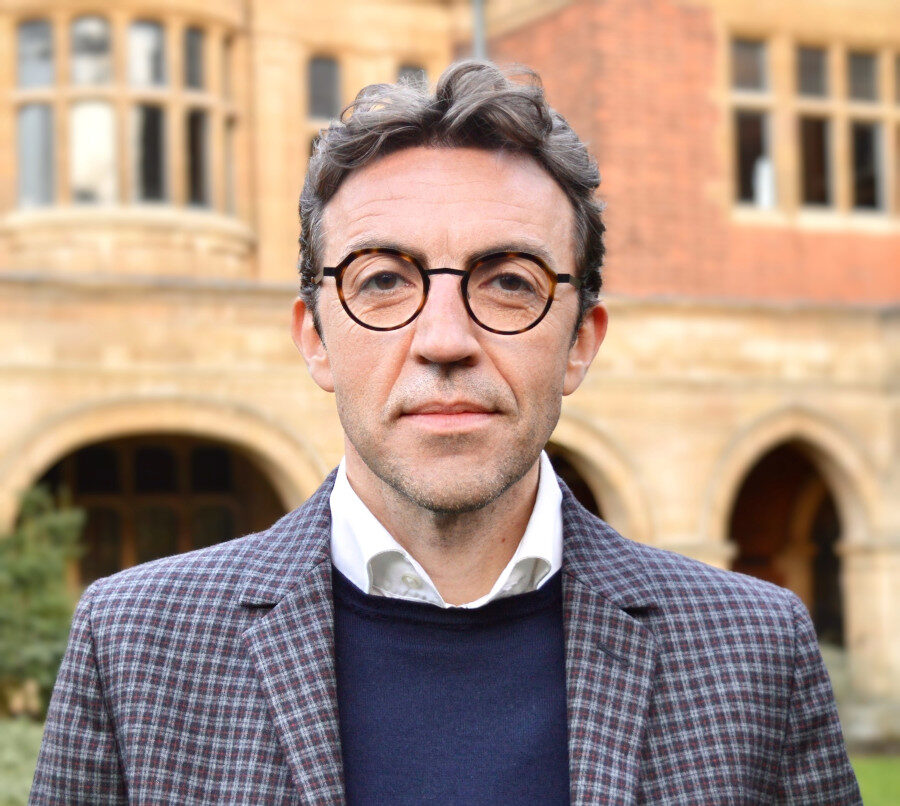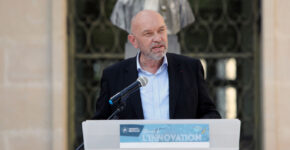Ludovic Berthier: further from break-even
Ludovic Berthier is Director of Research in Statistical Physics at the Charles Coulomb Laboratory and Research Associate at Cambridge University. Last March, this author of over 200 publications was awarded the CNRS Silver Medal for 25 years of research into disordered physical systems.

" I like to look at how things move in general, I find it fascinating. How they move, and why they move the way they do. " A list of publications as long as your arm, projects backed by prestigious funding, and yet Ludovic Berthier, a researcher at Montpellier's Charles Coulomb Laboratory, still knows how to find simple words to explain a discipline that is not: statistical physics. Statistical physics focuses on understanding and predicting the behavior and evolution of physical systems, starting with the most elementary building block: the atom, the molecule, the particle... " More concretely, we try to understand the behavior and evolution of physical systems, starting with the most elementary building block: the atom, the molecule, the particle... ". More concretely, we try to understand why a material is a solid, for example, and what this implies for its mechanical properties when heated, stretched or compressed..." develops Ludovic Berthier.
Like a pile of oranges
When he began his PhD at the end of the 90s at the ENS in Lyon, statistical physics was opening up a new field with the study of out-of-equilibrium, disordered physical systems. A theme that captivated the young scientist: " It was a pretty exciting time, there was a real buzz in the community around a multitude of new questions ". He chose to focus his thesis on vitreous systems, such as window glass and emulsions. "If you cool an ordinary material, the atoms will order themselves on a crystalline lattice and equilibrate according to steps well known from statistical physics. But if you subject a window glass to the same treatment, the particles will remain disordered, a bit like in a pile of oranges at the grocer's. "
How can we explain this behavior? The phenomenon of aging. Materials such as glass relax over very long periods of time and continue to evolve indefinitely towards a state of equilibrium, which is therefore never reached. " The things that interest me are things that evolve, that are dynamic over time. So ordinary descriptions or traditional mathematical approaches don't work. I don't tell myself what the property of this material is, because that property is evolving as I describe it," continues Ludovic Berthier.
From atom to grain of sand
His thesis was awarded the Saint Gobain Young Researchers prize by the French Physics Society. This was followed by a post-doc at Oxford University and a prestigious Marie Sklodowska-Curie fellowship. In the theoretical physics department, he continues to accompany the emergence of new questions on disordered systems. " We laid the foundations by studying highly simplified models to try and understand how particles move in a very dense and disordered system ". In 2004, after three years spent in the hustle and bustle of Oxford, the physicist obtained a position at the CNRS; he settled in Montpellier and joined the L2C, where he still works.
Keen to maintain strong international collaborations and extend his research areas to other materials, Ludovic Berthier approached the University of Chicago, where he continued his work throughout 2007. " There were specialists in granular materials there. By working on grains of sand, I was staying within disordered systems, but instead of studying atoms of an angstrom, I was considering grains of sand of a millimeter. And yet, with sand, we observe similar states of matter: if you shake sand in a plate, it crystallizes, and if there's wind, it forms a gas...".
On his return to France, Montpellier welcomed him with a bronze medal from the CNRS and funding from the Occitanie region. " At that time, theoretical physics benefited from regional funding, but that's not really the case today, as we prefer much more applied disciplines," observes the researcher. Thanks to his excellent results, he was awarded his first ERC (European Research Council ) grant in 2012. That same year, he returned to the ENS in Lyon, but to teach. He will be leaving this position in September to teach at the ENS in Paris.
Monte-Carlo swap and the Simons Foundation
His work caused a new stir in the community in 2017 with the "Monte Carlos swap", a numerical algorithm he developed to perform numerical simulations on the computer by studying model materials in them. " The simulations make it possible to simplify nature as much as possible while remaining close enough to the real system to be relevant ". The challenge with disordered systems is to successfully simulate the very long timescales over which they evolve, using faster algorithms. " Thanks to Monte Carlo swap, we can now simulate times that are gigantically longer than before, so that simulation can finally reproduce real experiments.
At the same time, he took part in the international scientific collaboration Cracking the glass problem which, thanks to the Simons Foundation in the USA, provided him with substantial funding from which he still benefits today. For physics in France, it's extremely difficult to obtain funding, so to be financially independent for 8 years is a dream," confides the researcher. It ends in a year, after which it's back to square one. Since 2019, Ludovic Berthier has been able to count on a major asset for this new departure: his position as Associate Researcher at theUniversity of Cambridge, with which he now shares his schedule. " I challenged myself scientifically by going there. There's a high density of researchers there, and I've renewed my ideas.
Silver medal
These ideas are currently being brought together in the writing of an ERC project open to a new challenge: the physical study of the collective dynamics of biological systems. Following in the footsteps of Nobel Prize-winning physicist Giorgio Parisi 2021, with whom Ludovic Berthier is collaborating, and his studies of starling swarms, he would like to take an interest in biological tissues: " I can look at this tissue as a material; pull on it, deform it, watch it flow to try to understand the mechanical properties that emerge at the collective level from the cell, or even how the cells self-organize to restructure the material, for example when you're injured and the tissue is torn. It's fascinating, it's going even further from equilibrium than before.
This enthusiasm is only tempered by the difficulty of securing funding in a particularly competitive international environment. " The list of competitors can be daunting : when you apply for an ERC, you may be up against Nobel Prize winners or professors from Max Planck Institutes who have considerable resources at their disposal that we don't have to carry out their research. While waiting for this funding to arrive, Ludovic Berthier was delighted to receive the CNRS silver medal last March, fifteen years after his bronze medal. " This news made me really happy. I realized that the work we do is seen and recognized. A benevolent return from the institution is always very much appreciated."
